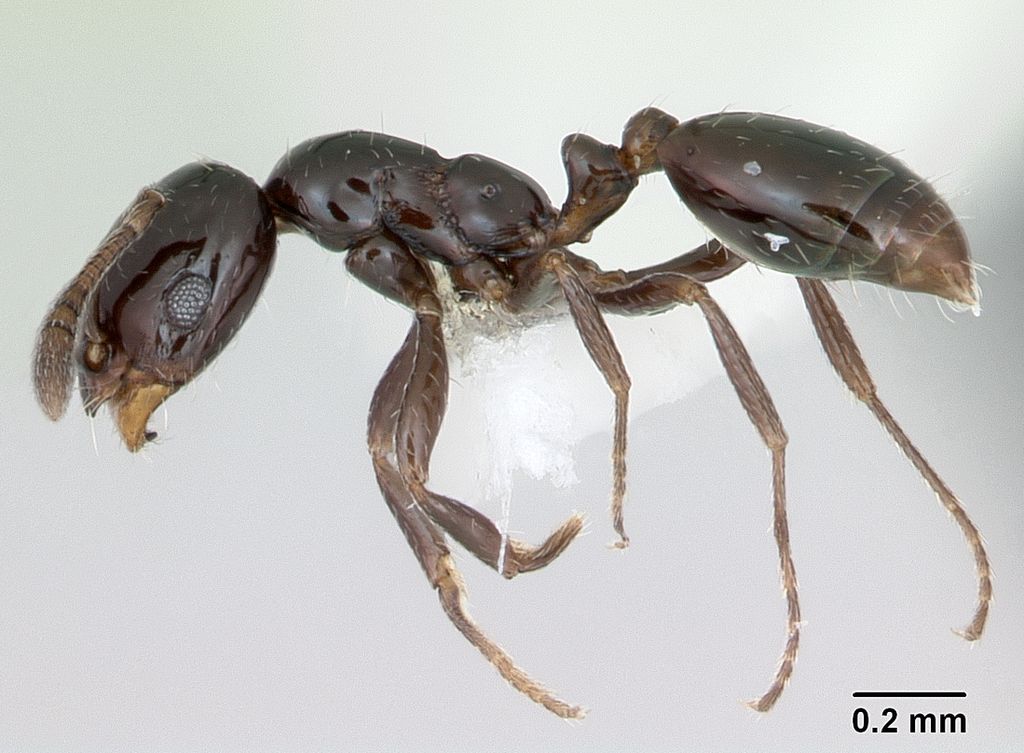I love finding a good reason why something is useful to the immediate environment, and so it was during an Insect Adventure program for a school group when a volunteer started in with a tidbit on ants that stopped me in my tracks. While children frolicked, catching field insects, Squam Lakes Natural Science Center Docent volunteer, Judy, discussed the basic importance of ants: they dig holes in the ground, which helps aerate soil and water plants. In my head I thought, “Wow, I hate those crawly things, but at least they make a great contribution to our environment!”
 |
| Little black ant |
It’s probably safe to say a high majority of the human population dislikes the presence of house ants (this blog focuses on common black house ants and little black ants, in particular) since we often see them scurrying in and about our kitchen, getting into pantries, and scarfing away sugary goods. Beside the fact that ants are well-known thieves, they offer humans little else to be interested in; they are neither beautiful to look at like a butterfly nor is there anything humorous or novel about them. Thus, come early spring, hardware and grocery stores stock their shelves with ample ant poison so that we may eradicate them in our homes.
Well, won’t you be surprised to know ants are more like humans than we may think. An ant’s lifestyle is very similar to our own, starting with “ants are the cleanest of all creatures” (Ewers 20). Ants are so clean, in fact, that my research in our library noted that “The American woman of the cultured class is almost painfully particular as to cleanliness,” going on to reference how in Japanese customs, individuals remove their shoes before entering their houses, and that even the Dutch “pride themselves upon the absolute cleanliness of their homes” but “all the cleanliness of the Japanese, the Dutch or Americans is as nothing to that among ants” (Ewers 20). All species of ants are specially equipped with many biological functions that aid them in the cleaning process, such as comb-like features on their forelegs. These features help ants to maintain their personal hygiene and also keep a pristine nest.
 |
| See live ants at Life Underground |
In many other countries, the presence of ant colonies in orchards can greatly aid in decreasing the population of fruit- or veggie-harming insects. In fact, a single colony of ants has the ability to eliminate upwards of 100,000 insects each day, a high majority of those insects being the harmful ones (Ewers 11). I was stunned to read that “Germany is the only country which has passed a law protecting the ant” (Ewers 10). This is because, in Germany, and other countries like China and Malaysia, if there is a caterpillar infestation in an orchard, farmers may hang ant colonies in each orchard tree and will then draw a thick ring of sticky tar around the trunk of the tree, ultimately preventing ants from crossing the tar. In America, our most similar practice to this has been by using ant colonies to “fight the destructive boll-weevil on the cotton plants” (Ewers 11).
The agricultural history of using ants to aid in farming practices was not the worst idea, compared to that, say, of the advent of using DDT as a pesticide. Ants are an incredible agricultural tool, able to “stir up the soil, plowing and harrowing better than any men can,” and should therefore be thoughtfully reconsidered as quite an underestimated, yet important, insect (Ewers 12). Despite mankind’s natural intuition to dislike the ant due to its tendency to turn up in places where we don’t want it, and my own nauseating reaction to feeling an ant scuttle over skin, I was inspired by Ewers interpretation of an ant’s importance and tremendous similarities to the human race. If you find yourself also questioning an ant’s abilities and similarities to humans, feel free to leave your questions, there is an awful lot of information not included here that I found just as intriguing!

No comments:
Post a Comment